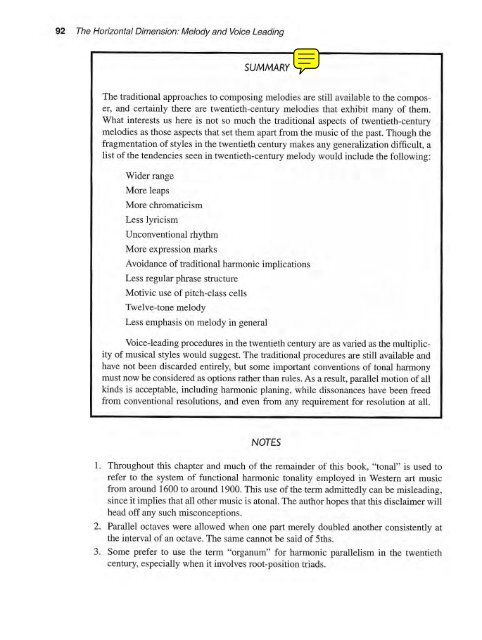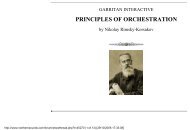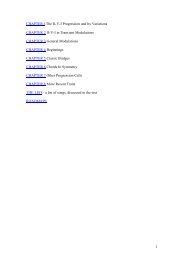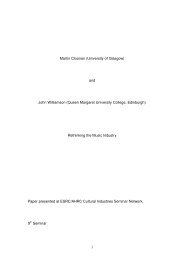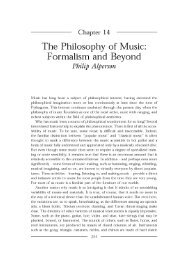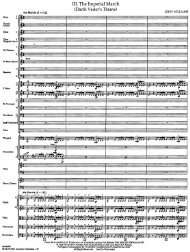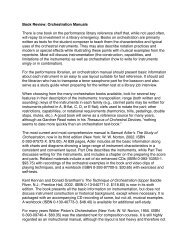TWENTIETH- - Synapse Music
TWENTIETH- - Synapse Music
TWENTIETH- - Synapse Music
You also want an ePaper? Increase the reach of your titles
YUMPU automatically turns print PDFs into web optimized ePapers that Google loves.
92 The Horizontal Dimension: Melody and Voice Leading<br />
SUMMARY<br />
The traditional approaches [ 0 composing melodies are still available to the composer,<br />
and certainly there are twentieth-century melodies that exhibit many of them.<br />
What interests us here is not so much the traditional aspects of twentieth-century<br />
melodies as those aspects that set them apart from the music of the past. Though the<br />
fragmentation of styles in the twentieth century makes any generalization difficult, a<br />
list of the tendencies seen in twentieth-century melody wou ld include the following:<br />
Wider range<br />
More leaps<br />
More chromaticism<br />
Less lyricism<br />
Unconventional rhythm<br />
More expression marks<br />
Avoidance of traditional harmonic implications<br />
Less regular phrase struclure<br />
Motivic use of pitch-class cells<br />
Twelve-tone melody<br />
Less emphasis on melody in general<br />
Voice-leading procedures in the twentieth century are as varied as the multiplicity<br />
of musical styles would suggest. The traditional procedures are still available and<br />
have not been discarded entirely, but some important conventions of tonal harmony<br />
must now be considered as options rather than rules. As a result, parallel motion of all<br />
kinds is acceptable, including harmonic planing. while dissonances have been freed<br />
from conventional resolutions, and even from any requirement for resolution at all.<br />
NOTES<br />
I. Throughout this chapter and much of the remainder of this book, "tonal" is used to<br />
refer to the system of functional harmonic tonality employed in Western art music<br />
from around 1600 to around 1900. This use of the term admittedly can be misleading,<br />
since it implies that all other music is atonal. The author hopes that this disclaimer will<br />
head off any such misconceptions.<br />
2. Parallel octaves were allowed when one part merely doubled another consistently at<br />
the interval of an octave. The same cannot be said of sths.<br />
3. Some prefer to use the telm "organum" for harmonic parallelism in the twentieth<br />
century, especially when it involves root-position triads.


